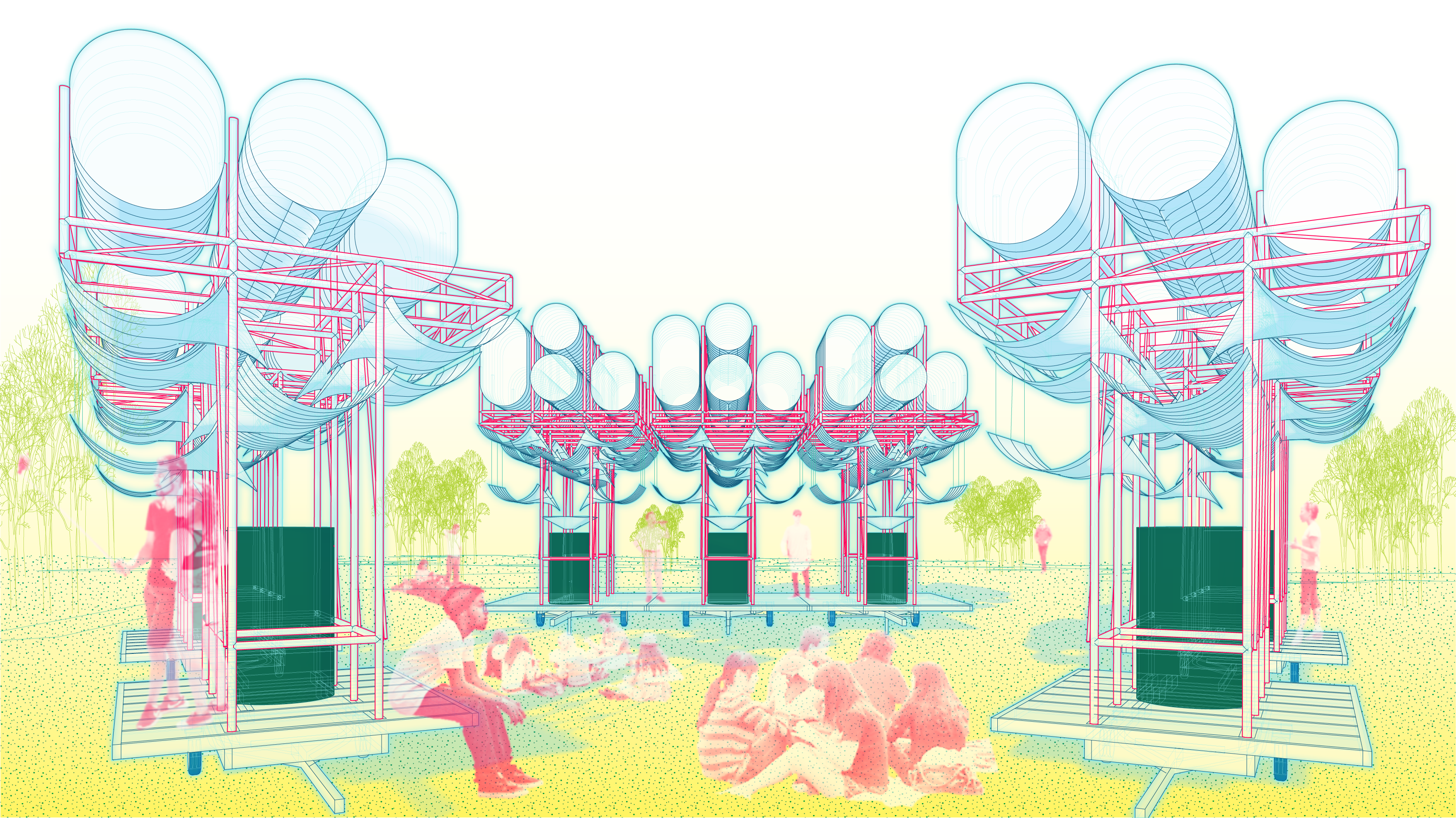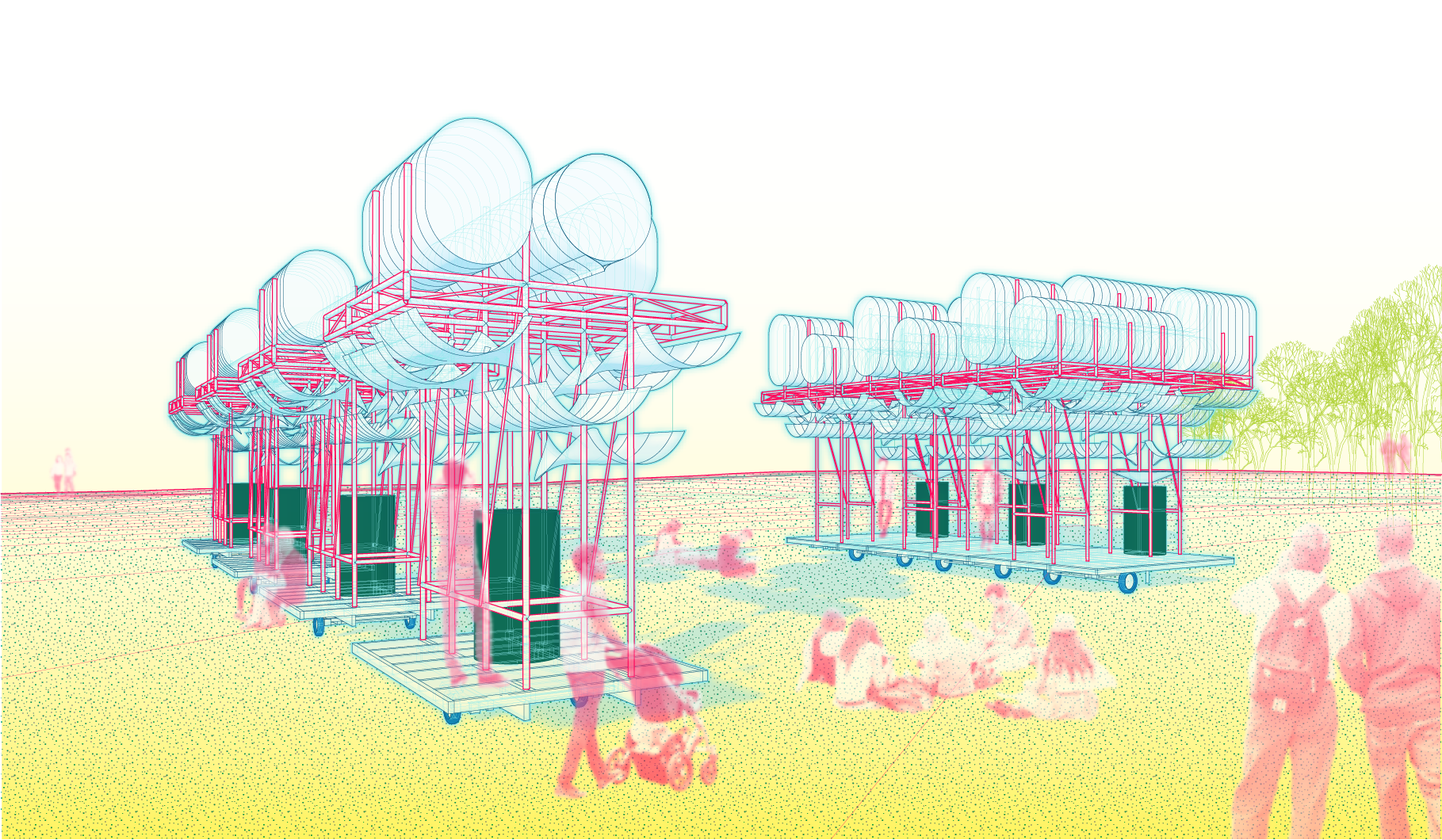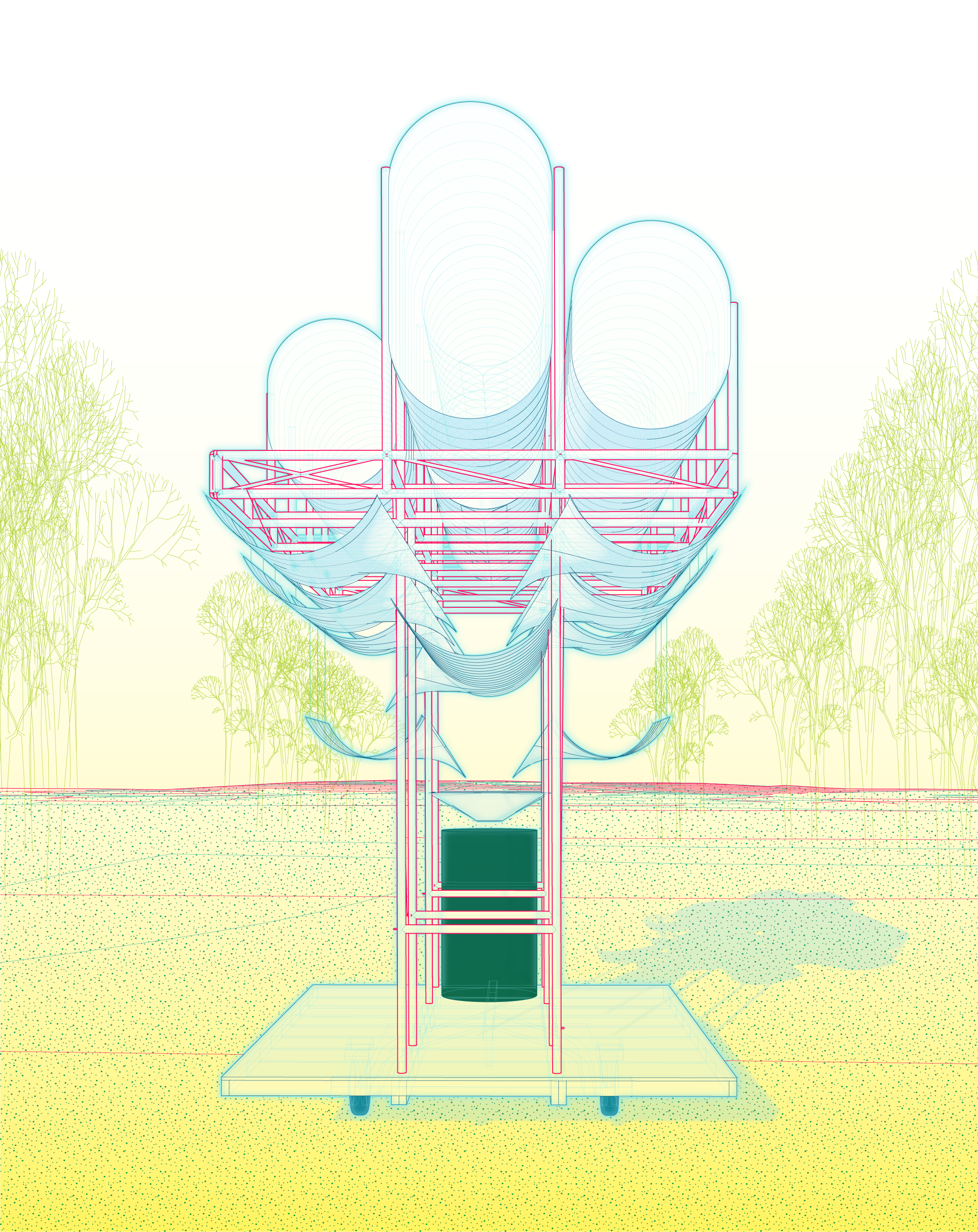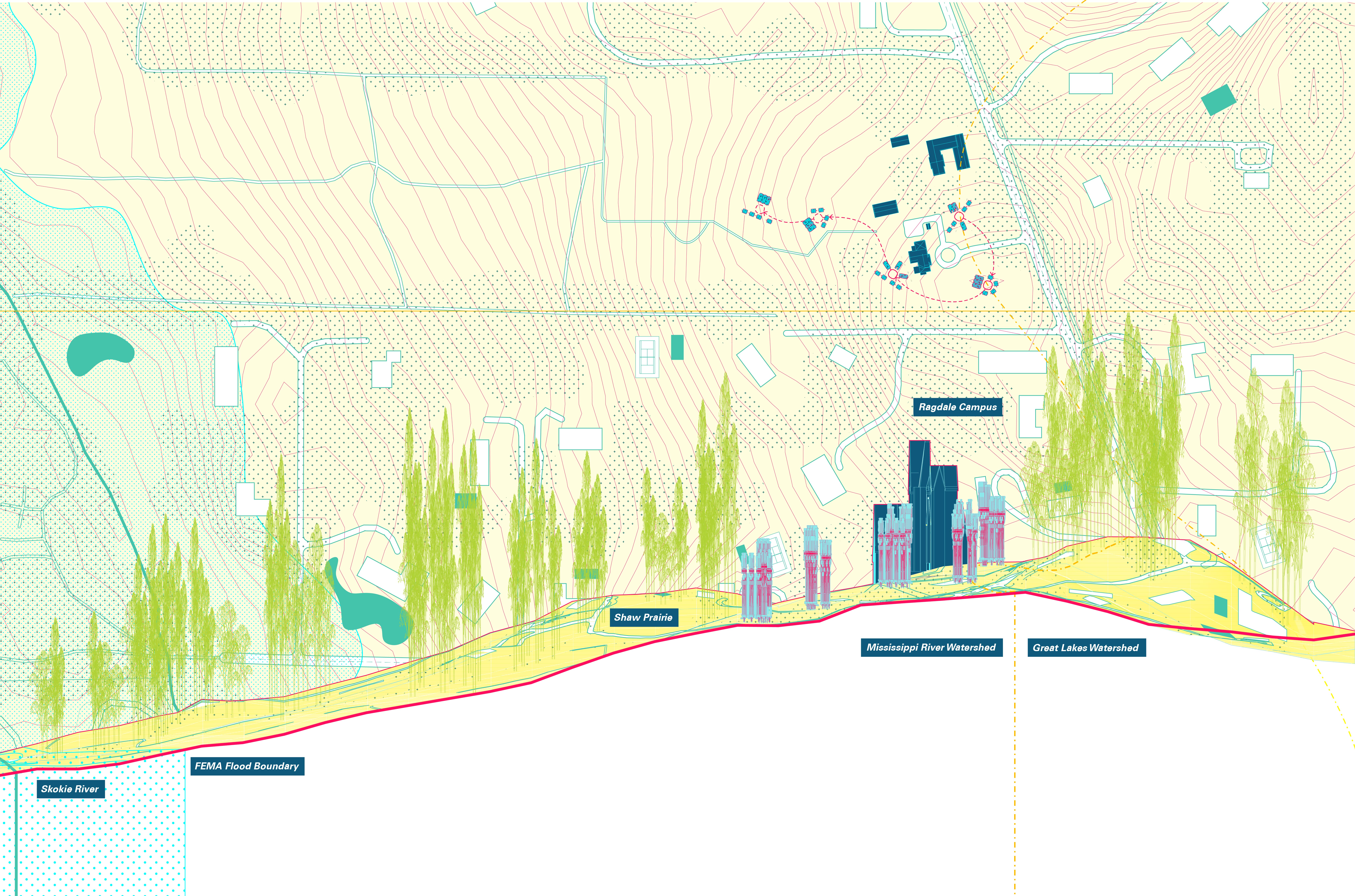Shaw Prairie Cisterns
Shaw Prairie Cisterns is a mobile, reconfigurable constellation of inhabitable, rainwater-diverting structures mounted on the backs of commercially-available boat trailers, ubiquitous lakeshore objects found in the driveways and boatyards of Chicago’s suburbs. Each trailer supports a platform for seating, socializing, performing, and observing; overhead, a network of lightweight boat-wrap vessels intercepts and collects rainwater, temporarily diverting it from flowing to the Skokie and Chicago Rivers.
The Lake Michigan and Mississippi River watersheds meet at the base of the Ragdale campus driveway; rainwater on Green Bay Road drains to the shores of Lake Michigan to the east, while rain falling west of the Ragdale campus runs over Shaw Prairie to the tributaries of the Mississippi River. Before colonization and urbanization, vast prairies throughout what is now Illinois and the American Midwest served as invaluable flood control systems, intercepting and sequestering runoff within deep, entangled root systems. Only six acres of prairie out of every million survives to the present day. As increasingly violent rainfall and diminished prairieland subject the region to torrential, damaging floods, tributary streams and rivers overrun their banks and place previously “safe” infrastructure at risk.
Shaw Prairie Cisterns reconstitutes locally available boating materials as inhabitable rainwater cisterns: prototypes of generous, mobile infrastructures which might be deployed in similar contexts to collect water, divert runoff, and provide platforms for performance and gathering. At the end of the season at Ragdale, we will give the Cisterns new homes throughout the Great Lakes watershed, helping to offset impervious surfaces while providing a welcoming public space beneath their translucent canopies.
Lake Forest, Illinois
In collaboration with Emily Kutil
Team: Melissa Folsenlogen, Tyler Schaafsma.









